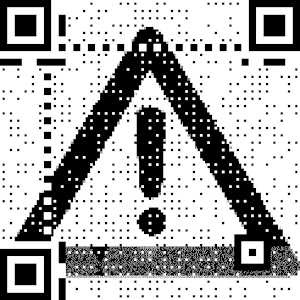QR Codes - Convenience with Caution
QR (Quick Response) codes are ubiquitous in today's world, offering a convenient way to access information and services with a simple scan. However, it is important to be aware of the potential threats associated with QR codes before using them.

One of the biggest dangers is the possibility of encountering malicious codes. Cybercriminals can easily create fake QR codes that lead users to malicious websites, download malware onto their devices, or even steal personal information. Unsuspecting users may inadvertently compromise their security by scanning QR codes without verifying their source.
QR codes are also often used in phishing attacks to trick individuals into revealing sensitive information, such as login credentials or financial data. A seemingly innocuous QR code on a flyer or email can redirect users to fake login pages that mimic trusted websites, making it difficult to distinguish between legitimate and fraudulent sources.
In addition to security risks, QR codes can also pose privacy concerns. When you scan a QR code, you are essentially providing access to your device's camera and sometimes location services. This opens the door to potential privacy violations. Malicious QR codes can exploit these permissions, capturing sensitive information without the user's consent.
To mitigate these threats, it is important to take certain precautions when using QR codes:
- Verify the source. Only scan QR codes from trusted sources. Be cautious when scanning codes from unfamiliar or suspicious locations.
- Use a secure QR code scanner app. Install a reputable QR code scanner app with security features and regularly update it to the latest version.
- Check for red flags. Examine the URL or destination before proceeding. Look for signs of unusual or misspelled domain names.
- Be cautious with personal information. Avoid sharing sensitive information through QR codes unless you are certain of their legitimacy.
- Enable permissions wisely. Be mindful of the permissions you grant to QR code scanning apps. Limit access to only what is necessary.
By following these simple tips, you can help to protect yourself from the dangers of using QR codes.
Additional threats:
- Physical attacks: Even physical QR codes on posters, labels, or products are not entirely immune to tampering. Attackers can place stickers or overlays on legitimate QR codes, redirecting users to harmful destinations or counterfeit products. Always double-check QR codes' physical integrity before scanning.
- Social engineering: QR codes can be used in social engineering schemes. For instance, an attacker may place QR codes in public spaces with enticing promises, such as "Win a Free iPhone." Once scanned, users may unknowingly share personal information or participate in fraudulent activities.
By being aware of the potential threats and taking necessary precautions, users can safely enjoy the convenience of QR codes.
ACE-CSE

Queen’s holds an Academic Centre of Excellence in Cyber Security Education (ACE-CSE) Gold Award from the National Cyber Security Centre (NCSC) and the Department for Science, Innovation & Technology (DSIT).